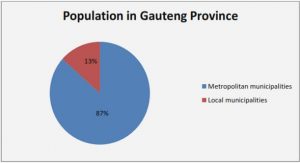Get Complete Project Material File(s) Now! »
Black Week
While these three seemingly ineffectual manoeuvres were in progress, three important battles – two of them related to the sieges – took place. They were fought on three different fronts and were destined to have a marked influence on the conventional stage of the war. Despite the fact that in all three cases the Boers were the victors, they were unable to capitalise on their successes. On 10 December 1899 General W. Gatacre and his 2 700 men on the southern front tried to clear Stormberg railway junction which had been occupied by the Boers. This attempt failed as General J.H. Olivier, with only 1 700 burghers, managed to hold their position until reinforcements arrived. When the British subsequently fled in disorder, the republicans neglected to press home their advantage.52 In the dark hours before dawn of the next day, 11 December, when the war had been in progress for two months, General Andrew Wauchope and his Highland Brigade marched on Magersfontein-koppie, south of Kimberley. Their purpose was to sweep Cronjé’s force – which was still engaged in preventing Methuen from relieving Kimberley – out of the way once and for all. The battle, which followed has been exhaustively analysed and reappraised by historians and military theorists. It began in the pearly grey hours of dawn after a stormy night. Wauchope’s Highlanders marched directly into the entrenched Boers. Murderous fire poured into them from the hundreds of Mausers fired by an invisible enemy.53
Nonetheless, the republicans suffered a grievous blow when the Scandinavian volunteer corps, which had moved forward into an exposed position during the night, was severely trounced by the Scottish troops. The Scandinavians fought back bravely, but suffered heavy casualties losing one out of every three of their men.54 After facing the Boers’ deadly fire during the long, scorching morning hours, the Highlanders fled in disorder after midday, when their officers’ orders were misunderstood and it was thought that the Boers were advancing out of their trenches. But once again a Boer general would not allow his men to follow up on their advantage. According to Breytenbach, he was unwilling to endanger any more human lives.55 On 15 December the British suffered a third disaster, this time on the eastern front. The newly-arrived General Sir Redvers Buller attempted to remove the Boer force under General Louis Botha from the Colenso Hills. The day started badly for the British artillery as well as for General A.F. Hart and his Irish Brigade. After a narrow escape when a shell exploded almost on top of him, a perturbed Buller decided at 10.00 to call off the attack. Cloete quoted a German staff historian as saying: “The general and not his gallant force was defeated.”56 And yet another Boer commander, this time Louis Botha, refused to push home his victory. Wessels maintained that because of this it could only be labelled a tactical defeat for the British.57
The first major laying down of arms
It is necessary to examine the reasons behind the large-scale laying down of arms and the abandonment of the war effort by substantial numbers of republicans. Burghers of the Free State abandoned their commandos and returned home in scores after the defeats at Paardeberg, Poplar Grove and Abrahamskraal. The impact of Roberts’ proclamations and the occupation of Bloemfontein was likewise significant on the number of burghers who simply went home.16 After the relief of Ladysmith in Natal and notably after Roberts’ entry into the ZAR, many burghers from the Transvaal republic followed suit. This first period of abandonment – or “handsupping” as it was called – which took place from March to June 1900, has been analysed in detail by the historian Albert Grundlingh. Several factors are suggested as reasons why the Boers forsook their duty, notably war-fatigue, low combat morale, scepticism and despondence, all of which led to a general spirit of defeatism. In addition Grundlingh discusses the poor discipline in the commandos and the lack of proper leave arrangements that prevailed in the Boer military structure. He also suggests that the series of proclamations and promises issued by the British, the burghers’ growing awareness of Britain’s massive war reserves and finally the prospect of reaping material benefits by switching loyalty all played a role.17 Grundlingh adds that in some cases mass abandonment was even instigated by Boer officers, as indeed happened with the Edenburg Commando.18
In his summary Grundlingh asserts that demoralization of burghers was the main factor for this first wave of capitulation.19 This shows that there had already been a psychological impact on the Boers and even though it took place during the transitional phase, before the actual guerrilla war, it is significant in terms of this study. The seeds of doubt had been sown, seeds that may even have lain dormant in the minds of many who remained on commando or those who later returned to resume fighting. These seeds that could probably sprout later when circumstances altered. This predicament was clearly illustrated by Field Cornet H.S. van der Walt of Winburg in the Free State. In the prologue of his diary he described how he too wavered about returning to the war, until he received a divine message while reading in Jeremiah 48.20 Many of those who abandoned the war effort, took an oath of neutrality when they handed over their weapons. This was one of the conditions included in a number of the proclamations that were issued by Lord Roberts. The aim was to convince the republicans of the futility of their struggle and reassure them of the reasonable attitude of the occupying force. The first proclamation was issued in February 1900 – even before the battle at Paardeberg had taken place – and was aimed at the Free State population in general. It demanded that citizens desist from any further hostility and it promised that such people would not be made to suffer, either in terms of their persons or their property.21 After the British occupation of Bloemfontein, Roberts issued his next proclamation on 15 March 1900, pledging that passes would be issued to allow the burghers to return to their homes. They would not be made prisoners of war nor would their property be taken from them.22 On 31 May 1900, after the British had crossed the Vaal River into the ZAR, Roberts issued a third proclamation aimed specifically at the burghers of the northern republic. It included the same basic promises as in the proclamation of 15 March, except that the section promising that property would not be taken from the people was omitted. This proclamation was followed by another on 6 June 1900 undertaking that burghers laying down arms and taking the oath of neutrality would be allowed to keep their livestock and would be issued with passes to move their livestock to winter grazing veld.23 Grundlingh declares that these proclamations had a significant effect on the already demoralized Boers. He quotes Frederick Rompel who had described the promises made in the proclamations and stressed that the prospect of being home with his wife and family was very alluring to many a burgher.24
War as a life-threatening experience
The mere fact that war is life-threatening, and disrupts the normal pattern of life causing uncertainty and hardship, means that war per se can be classified as a stressor. And although its cataclysmic nature also means that those subjected to it will frequently form groups which share their hardships, the varied effects which war brings about on individuals, also places it within the group of personal or private stressors. During the guerrilla phase of the Anglo-Boer War the burghers and their officers all experienced an intense measure of stress, as can be expected in any guerrilla war. Whereas Binneveld places the emphasis on the stress experienced by the “Goliath”- army,2 it is only natural to accept that the soldiers of the smaller force will likewise experience high degrees of stress. While the bigger force is mostly subjected to the sudden, surprising and often barbaric nature of the guerrilla’s actions, the latter will, on the other hand, be at a disadvantage in details such as weaponry, military discipline and numbers of fighters. This disadvantage in itself will be a major stressor to the guerrilla-fighter.
During the Anglo-Boer War, in those cases where a particular action was planned beforehand, e.g. attacks on enemy camps or convoys or the destruction of railways to capture supply trains, the period of time preceding the action became a stressor. The participant would conceivably have reflected how the coming action would change his life. The risk of losing his life or, worse still, of being badly wounded, would naturally have been recognized and reflected on. These dreads would further have been complicated by the looming humiliation of being captured by the enemy and sent overseas or else by the self-doubt in his ability to stand firm under enemy fire. The “time of waiting” can no doubt be defined as a stressor. In this situation the overall gnawing uncertainty of what could happen would become a stressor, probably of a very private nature as each man reflects on his own thoughts. And although this holds true for any soldier in any war, the increasingly unfavourable situation of the republicans as the war progressed made it even more so.
Chapter I – The conventional war
1. The imbalances
2. The first battles
3. The three sieges
4. Black Week
5. Roberts takes over
Chapter II – The psychological foundation
1. Introduction
2. What is stress
3. A simplified stress model
4. Historical development of the theory of stress
5. The elements involved in stress
6. Negative outcomes of stress
7. Positive outcomes
8. A perspective of stress and the Anglo-Boer War
Chapter III – Guerrilla warfare as a global concern
1. Introduction
2.. Guerrilla warfare and related concepts
3. Guerrilla warfare over the ages
4. The essence of guerrilla warfare
5. Guerrilla warfare: the road to success or failure
Chapter IV – Events during the transitional phase
1. Introduction
2. Transition commences
3. The first major laying down of arms
4. The last conventional battles
5. De la Rey and the western Transvaal
6. The Brandwater Basin
7. The hunt for De Wet begins
8. The ZAR finally embarks on guerrilla warfare
Chapter V ) Regional background to the guerrilla warfare
1. Southeastern Transvaal
2. Northeastern Transvaal
3. Western Transvaal
4. Northern Transvaal
5. The Orange Free State
6. The Cape Colony
Chapter VI ) Stressors Boers encountered in the guerrilla phase
1. Introduction
2. Stress caused by military situations
3. Stress caused by the loss of infrastructure
4. Stress caused by environmental factors
5. Stressors caused by daily hardships
6. Stress caused by anguish
7. Stressors prompted by the individual’s disposition
8. Résumé
Chapter VII ) Resistance resources and coping during the guerrilla warfare phase
1. Introduction
2. Material issues
3. Motivational issues
4. Intrapersonal resources
5. Résumé
Chapter VIII ) The final appraisal
1. Introduction
2. Stage 1: Guerrilla war begins
3. Stage 2: The tide turns
4. Stage 3 – The watershed
5. Stage 4 – The last scene
6. Resumé
Chapter IX ) The ultimate impact
1. Guerrilla war? Yes or no
2. The impact of the guerrilla war on the Boers: some case studies
3. Resolution 327






